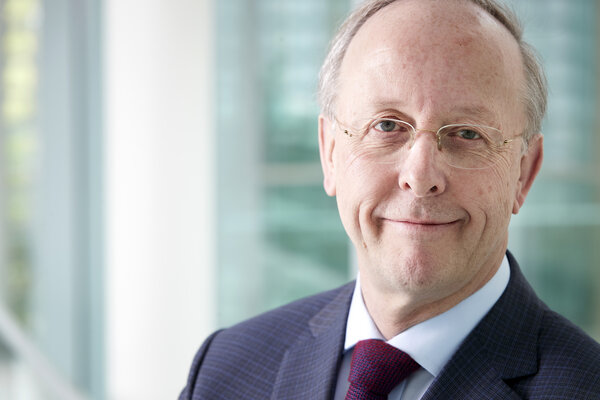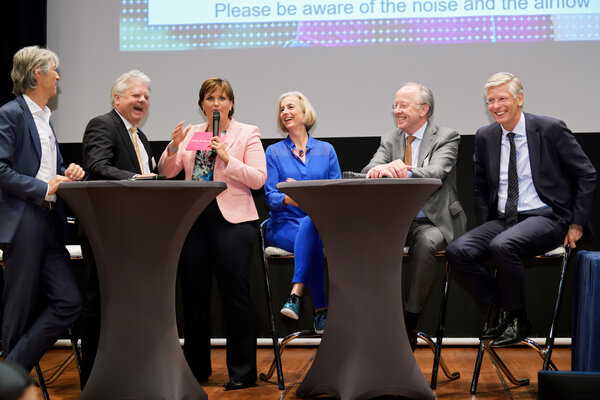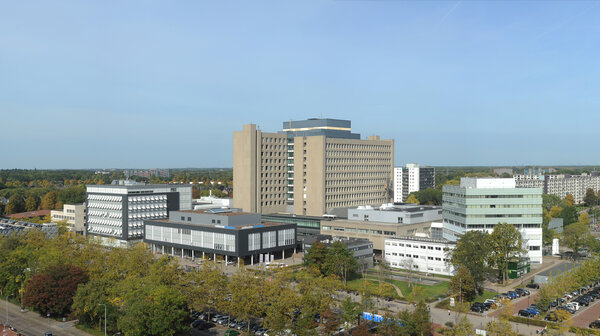In June this year Piet Batenburg, Chairman of the Executive Board of Catharina Hospital, will retire. Batenburg is one of the founders of e/MTIC, the Eindhoven MedTech Innovation Center, a strategic collaboration between three hospitals, Philips and Eindhoven University of Technology (TU/e). He imagined his last months of working at the hospital somewhat different, but his focus is now on fighting the coronavirus COVID-19. "Of course it is unfortunate for me, but currently almost the entire organization is working to get the virus under control.” In this interview, safely via a video call, Batenburg looks back on the origins of e/MTIC and how this initiative will continue without him.

The basis for e/MTIC as we know it today was created in 2014. A decision by the government to provide some hospitals with an incentive arrangement for research funding got Batenburg thinking. "These hospitals had a distinctive scientific profile, I was told at a meeting of the Collaborating Top Clinical Training Hospitals. I was surprised by this remark because, in my opinion, many more hospitals have a distinctive scientific profile. I am not just talking about the Catharina Hospital. From that day onwards, I continued to think about what we could do to develop our hospital more in the field of research.”
Joining forces
"In the Eindhoven area, we are able to join forces with lots of potential and opportunities. In other parts of the Netherlands, the hospitals do not have the same possibilities, like the research in cooperation with the TU/e. At that moment in 2014 I was still thinking along the line of a collaboration with the hospitals and the university. My colleague Jan Harm Zwaveling of the Maxima Medical Centre was very enthusiastic about this idea. We entered into conversation with the university Chairman of the Board of Directors at that time, Jan Mengelers. Jan was also in favour of the idea and said: ’If we also involve Philips, this cooperation will be unique within the Netherlands´. Such a strong relationship as Philips has with the TU/e, you will not find at the other technical universities. Philips then thought of involving the Kempenhaeghe hospital to join as well and that is how the e/MTIC partners came together.”
Specialists on the world stage
"Within e/MTIC, we only work together in those areas where our specialists are on the world stage in terms of scientific research. These specialists attend major international conferences and publish in leading journals. For the hospitals Máxima MC and Kempenhaeghe, their focus areas are respectively Perinatal and Sleep medicine. For the Catharina Hospital, these are the cardiovascular specialists and recently also oncology. Oncology already met the criterion that the specialists are on the world stage. If the collaboration for oncology within e/MTIC is to succeed, there must be a connection with the research of the TU/e and Philips. Eventually, we have found that connection together and then everything started to move forward.”

Strategic repositioning
"You may wonder why this flywheel, this alliance, is running at full power. This flywheel turns mainly because the great added value is seen by both the researchers working within the hospitals and the people at the TU/e and Philips. They all know how to find each other on the content. Philips and the TU/e also look at their output of course. Output for the university are publications and promotions and valorisation: can what is conceived, be translated into a social value? For Philips, the outcome is that intellectual property will emerge and that products will go to market. Two developments have contributed to the success of our collaboration in recent years. The first is the strategic repositioning of the Eindhoven University of Technology. The university has chosen several strategic directions, right across their faculties, and Health is one of them. Secondly, Philips has become a medical technology company. So their focus is on healthcare.”
Attracting medical specialists
The added value for the hospitals within the partnership is that e/MTIC provides access to high-quality scientific research. "And that is how we attract good medical specialists to Eindhoven. People from other parts of the country come to our hospital to work as specialists, while they could have an academic career in Amsterdam, for example. With us, they can have a wonderful mix of clinical scientific research and work in daily practice. Within e/MTIC, we all have a clear image of what is important to us.”

The advantages for the patients
Patients also highly benefit from the collaboration, of course. "The added value for the patients is that we can attract good doctors and for a smaller group of patients, they can sometimes already benefit from innovations that we are developing. For example, we are testing a new technology in which we send patients home at an earlier stage and monitor them safely. The right care in the right place. There is no better place to recover than at home, but it has to be done safely. Philips has developed a technology for this, which we are now testing with different categories of patients.”
The continuation of e/MTIC
To conclude, Batenburg looks to the future. "Every director who departs takes stock of the situation, of course. Where have I made a meaningful contribution to? What will remain in a number of years? I am convinced that e/MTIC will still be there for many years to come. This collaboration has such a huge support among the professionals. It is a nice addition of strengths: the research of the top specialists in our organizations, the strategic positioning of the TU/e and Philips as a medical company, all providing such a strong foundation that I have no doubt that e/MTIC will continue to exist.”
Interview by: Sabine te Braake
*) Editorial note: After this interview took place, it was announced that due to the COVID-19 virus outbreak, Mr. Batenburg would stay on until 1st of September 2020 to support his successor Mr. van der Meer, who will take over chairmanship on the 1th of July 2020]